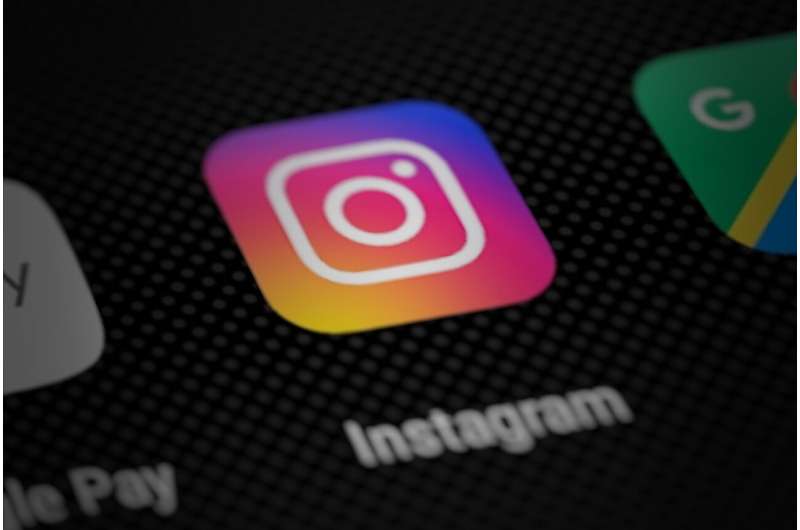This article has been reviewed according to Science X's editorial process and policies. Editors have highlighted the following attributes while ensuring the content's credibility:
fact-checked
trusted source
proofread
Influential 'Instavangelists' blur line between religion and social media

Social media has radically changed the way we do things, from communicating to purchasing to learning to voting. But according to a new article, it's also transformed the way we define religion—particularly among women.
"Religious studies scholars are interested in how fluid religion is and how it's really bound up with social processes and power struggles," said Jacquelene Brinton, associate professor of religious studies at the University of Kansas. "Whereas outside of religious studies, people think of religion as something static and easily defined. Social media is showing us how that process of transformation happens."
Her new article, "Media and the Formation of Secular/Religious Networks," examines the rise of so-called "Instavangelists." These are women (primarily) who have replaced traditional faiths with their own gospel through Instagram and other online platforms. They preach to other women about "how to be their best selves," even though both the media and the message further blur the lines between religion and the secular. It appears in the Journal of Religion, Media and Digital Culture.
Brinton first came across the term Instavangelist while reading Leigh Stein's 2021 New York Times article titled "The Empty Religions of Instagram: How did influencers become our moral authorities?" It notes how media personalities such as Gabrielle Bernstein (1.3 million followers on Instagram), Glennon Doyle (2.1 million followers), Brené Brown (5 million followers) and Gwyneth Paltrow (8.3 million followers) have become the "neo-religious leaders of our era."
"What's fascinating to me is when authors like those at the New York Times write about Instavangelists, they don't realize what they're doing is putting forth a new definition of religion without any self-consciousness about it," said Brinton, who also chairs KU's Department of Religious Studies.
"It is a little bit weird that we're discussing people who are not affiliated with what we generally define as religion in a typical way: a church, institution or belief. This has just entered our common understanding of what religion is," she said.
While her piece focuses specifically on social media, Brinton said she believed this process was started by earlier media such as print and television.
"But what social media does is give us the sense we know the individuals we're following … when it's really just marketing. It enables that 'hiddenness of the secular,' and it enables that secular thing to appear to be religious. And that all comes together through this notion of self-help and reinventing yourself," she said.
Media has often given viewers/users the illusion of having a deep connection to the source. For instance, CBS Evening News anchor Walter Cronkite was considered "the most trusted man in America," even though few of his admirers had ever met him.
"Yet you didn't see pictures of Walter Cronkite at home eating dinner with his family. Whereas Instagram gives you the sense that you are in people's homes and involved in their lives—and you can actually get involved in their lives. You can comment on what they're cooking and tell them how beautiful their children are," she said.
Also, she noted, that when people were watching network news, the commercials came on in the middle.
"You're not exactly sure where they are now. What part is a commercial? Back then, you knew who was paying Walter Cronkite," she said.
When researching Instavangelists, Brinton was most surprised by their ties to marketing.
"Evangelical female preachers such as Sarah Jakes Roberts are brands. They have agents and publicists. It was surprising to me how much they were able to mix in this branding message through social media when they are preaching about Christ."
Was there a reason she exclusively focused on women?
"I think self-help messages tend to be geared toward women, and the messages of these Instavangelists are primarily geared toward women. But it would be interesting to try to find some male ones to see how their messages are formed," she said.
Now in her 13th year at KU, the Philadelphia native specializes in Islamic studies but also maintains a strong research interest in media and theory. She is also a member of KU's Center for Global & International Studies.
Brinton hopes her article will give those outside of academia generally and religious studies specifically a sense of the fluidity of religion, so that people writing about the topic from a digital media perspective can think of ways in which using religion as a static term is not entirely accurate.
"How did we get to this point where a person like Gwyneth Paltrow could be considered a religious personality by a newspaper? It doesn't seem logical to me," Brinton said. "I think this topic needs more excavating."
More information: Jacquelene Brinton, Media and the Formation of Secular/Religious Networks, Journal of Religion, Media and Digital Culture (2023). DOI: 10.1163/21659214-bja10089
Provided by University of Kansas




















